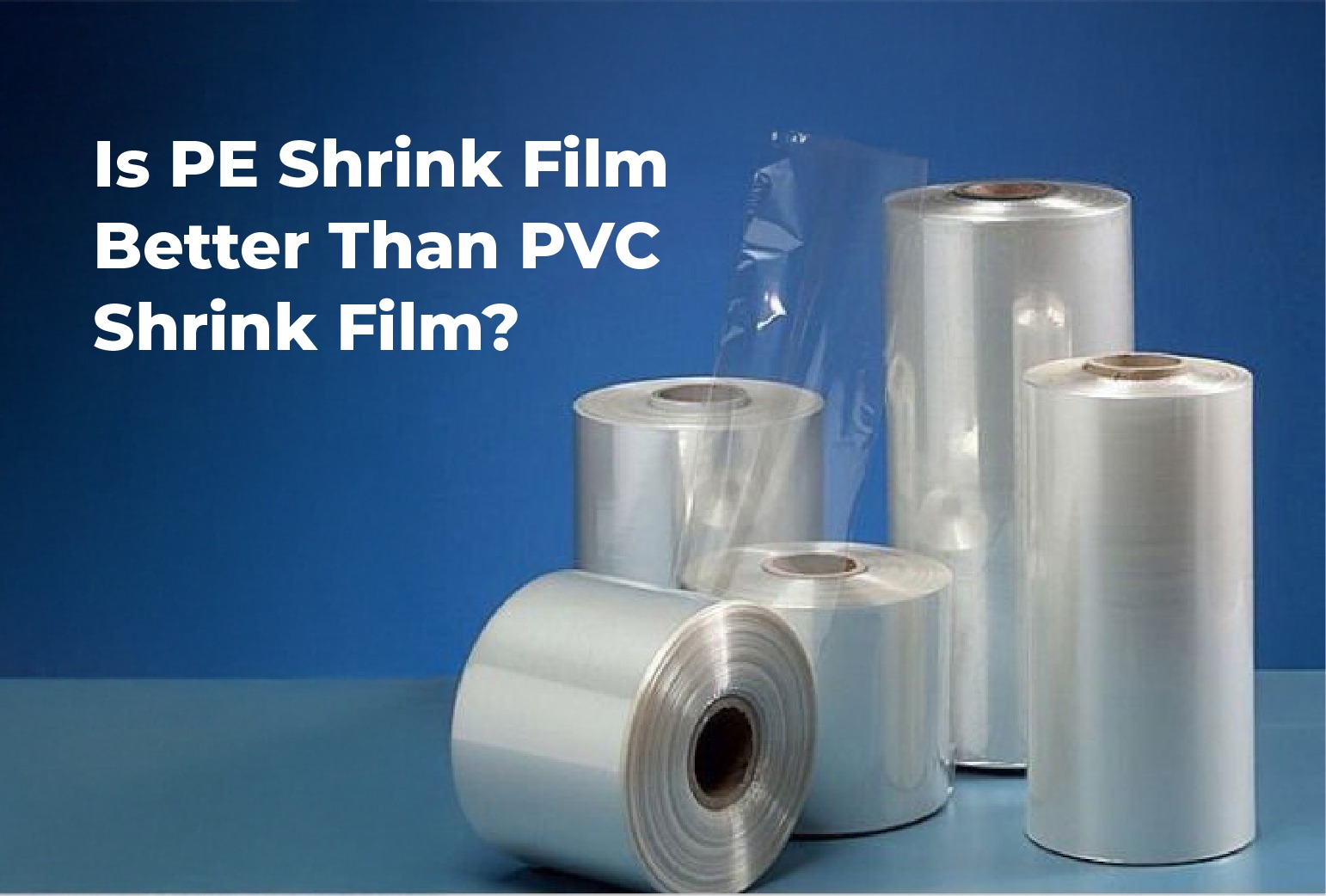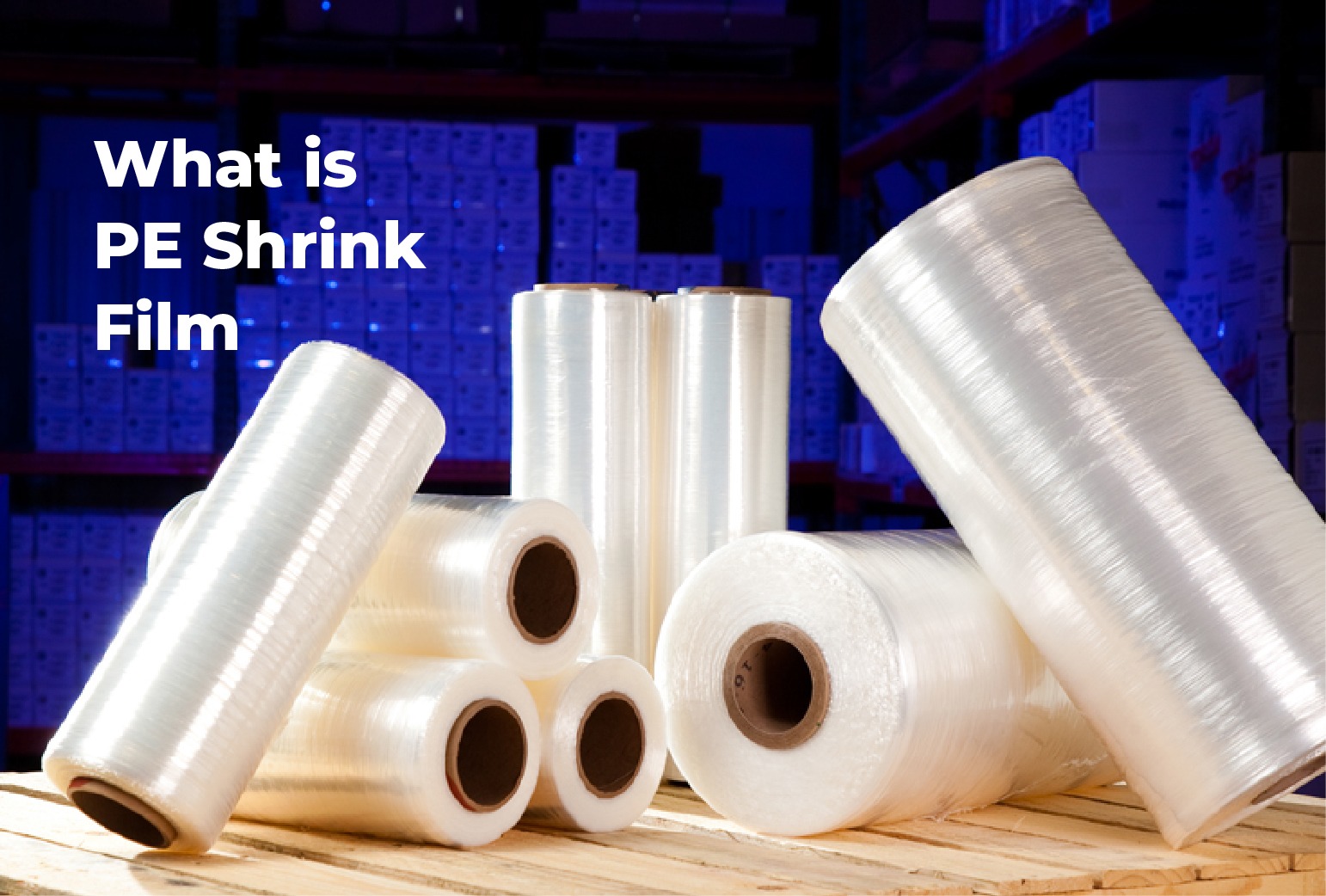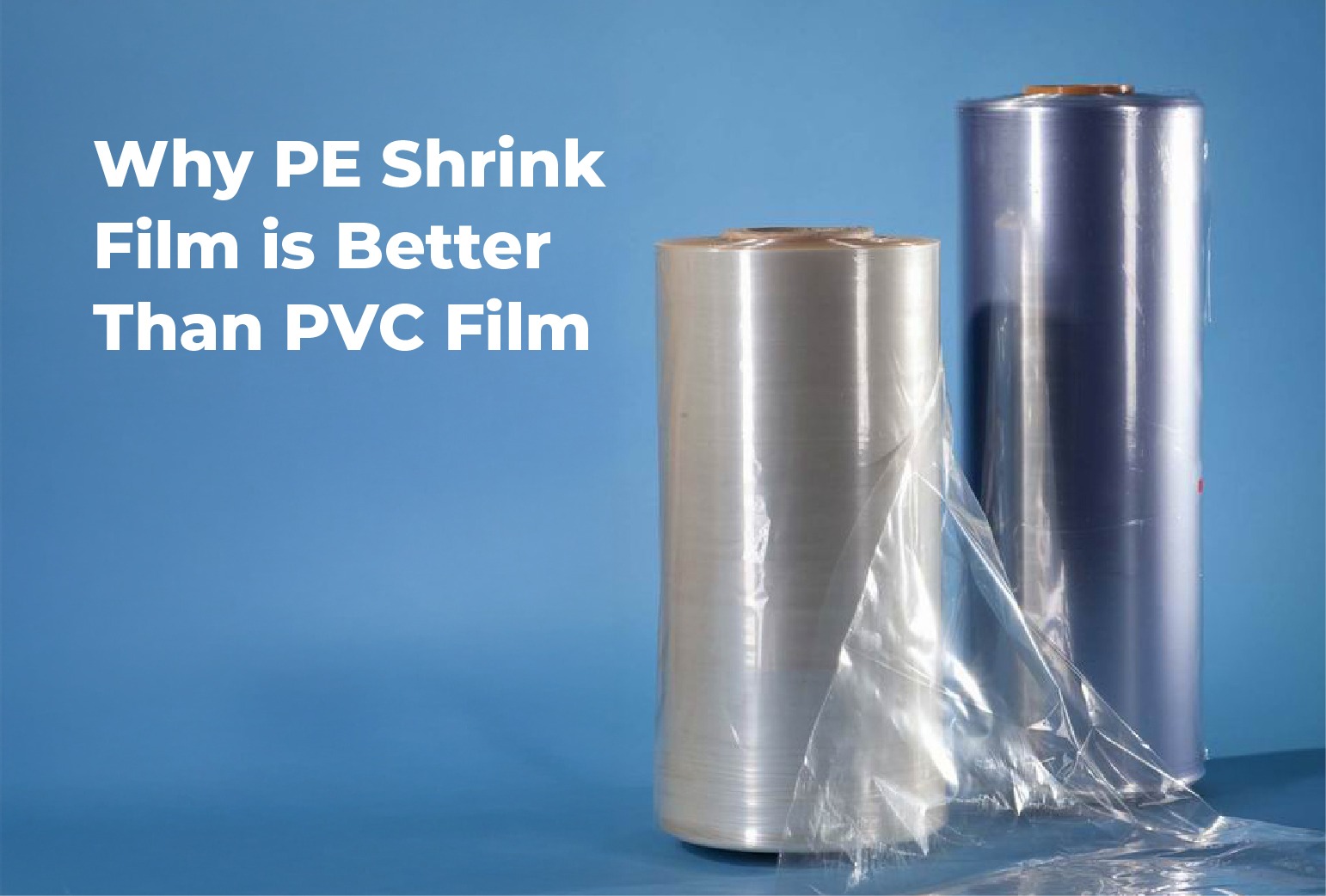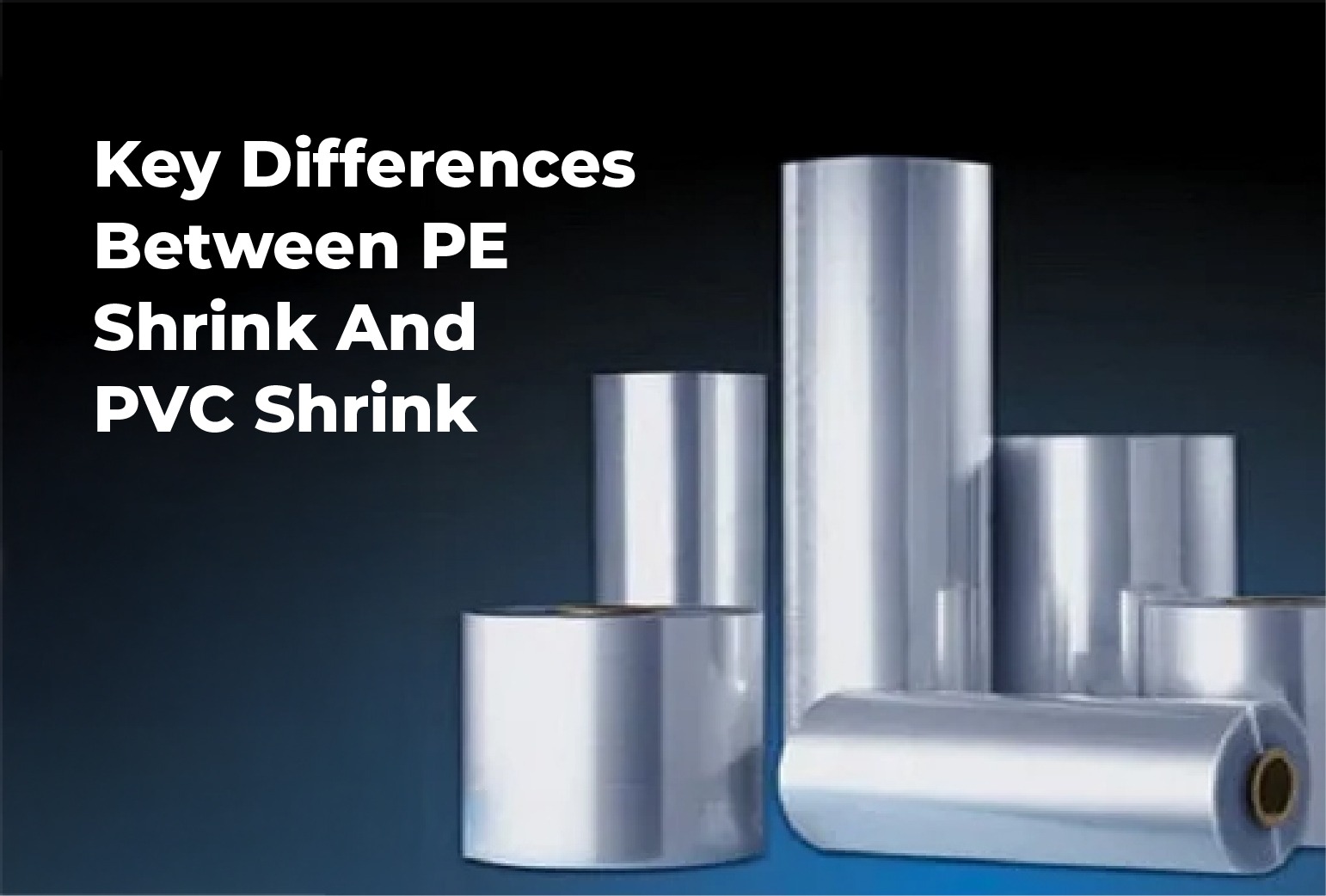Is PE Shrink Film Better Than PVC Shrink Film?

Choosing the right shrink film plays a critical role in product protection, branding, logistics, and regulatory compliance. Among the most used packaging materials are polyethylene (PE) and polyvinyl chloride (PVC) shrink films. While both serve the core function of wrapping and protecting products, their material properties, environmental impact, and long-term viability are significantly different. Two of the most commonly used materials in the shrink packaging world by a typical plastic manufacturing company are polyethylene (PE) and polyvinyl chloride (PVC). Both offer shrink capabilities when exposed to heat, but beyond that similarity, they differ greatly in mechanical performance, environmental profile, cost-effectiveness, and compliance with regulatory standards. For businesses looking to balance performance with safety and sustainability, the choice between PE Shrink Film and PVC shrink film becomes a defining factor.
This article explores the nuanced differences between PE and PVC shrink films, examining factors like material structure, shrink characteristics, environmental impact, cost dynamics, and long-term usability.
What is PE Shrink Film

PE Shrink Film, short for polyethylene shrink film, is a highly flexible and durable thermoplastic used widely in industrial packaging. It is typically manufactured using low-density polyethylene (LDPE) or linear low-density polyethylene (LLDPE), known for their elasticity, strength, and resistance to tearing. When heat is applied, the PE film contracts tightly around the product, forming a strong protective barrier. It is commonly used by manufacturers and distributors seeking cost-effective packaging solutions that don’t compromise on strength or presentation.
What sets PE Shrink Film apart is its exceptional mechanical properties, such as high elongation capacity, puncture resistance, and excellent tensile strength. When exposed to controlled heat, typically from a heat tunnel or shrink gun, the film reacts by shrinking uniformly around the product, conforming tightly to its shape. This process creates a clean, tamper-evident seal that not only protects the product but also improves its visual appeal during transport or retail display.
Unlike rigid packaging materials, PE Shrink Wrap is adaptable. It accommodates a variety of product shapes and sizes, making it ideal for palletized loads, bundled consumer products, and fragile goods. What makes PE Shrink especially appealing to manufacturers and distributors is its impressive mechanical performance, such as high puncture resistance, flexibility across temperature variations, and exceptional elongation properties. These characteristics make PE Shrink the preferred option in high-throughput environments where performance cannot be compromised.
What Is PVC Shrink Film?
.jpeg)
PVC Shrink Film is composed of polyvinyl chloride, a synthetic plastic polymer once popular in retail and consumer packaging due to its high clarity and smooth finish. PVC films are typically used for packaging small consumer items like CDs, cosmetics, and toys, where visual appeal is essential. However, the composition of PVC comes with significant downsides. When subjected to heat during the shrink process, PVC releases hydrochloric acid and other chlorine-based compounds, which raise both health and environmental concerns.
The rigidity of PVC also affects performance in industrial applications. While it delivers a glossy, transparent appearance, its limited shrink rate and brittleness under pressure make it a less durable option. It is more prone to cracking and tearing, especially in high-humidity or low-temperature environments. As environmental regulations around PVC become stricter, many businesses in Nigeria are shifting to PE alternatives offered by PE Shrink Films Suppliers in Ibadan, who can meet both quality and sustainability benchmarks.
Why PE Shrink Film is Better Than PVC Film

In head-to-head comparisons, PE Shrink Film outperforms PVC across key packaging metrics. First, PE offers superior load retention. Whether used for unitizing beverages, construction materials, or agricultural products, its higher tensile strength ensures that the film holds tightly under pressure without splitting. PE Shrink Wrap also has better resistance to punctures, abrasions, and moisture, making it suitable for warehouse storage and long-haul transportation.
Beyond mechanical advantages, PE Shrink is a more environmentally responsible option. It is fully recyclable under category 4 plastics and does not emit toxic gases during the shrinking or disposal process. This makes PE a preferred solution for businesses looking to meet ISO, SON, or international regulatory requirements for sustainable packaging. By switching to PE Shrink Film from a trusted plastic manufacturing company, businesses in Ibadan and surrounding regions benefit from improved performance without sacrificing environmental responsibility.
Key Differences Between PE Shrink And PVC Shrink

Though both materials serve as shrink packaging, their performance, safety, and cost characteristics differ considerably. Understanding these differences is essential for selecting the right film for your application, especially in logistics-heavy operations.
Clarity and Transparency
PVC shrink film is more transparent and offers a glossier finish, making it attractive for shelf displays. However, this comes at the cost of durability and environmental safety. PE Shrink, while slightly less glossy, provides sufficient transparency for product identification and barcoding, with the added benefit of higher strength and elasticity. For bulk packaging and transport, PE Shrink Wrap is the more practical choice.
Durability
Durability is a critical factor for shrink films used in industrial or export applications. PE Shrink Film is notably more durable than PVC. It maintains flexibility under cold conditions, resists punctures from sharp-edged products, and provides better tear strength. When sourced from a reputable PE Shrink Films Supplier in Ibadan, PE film offers consistent quality and resilience, reducing the risk of packaging failure during transit.
Cost
At first glance, PVC shrink film may seem like the more affordable option due to its lower unit cost. However, cost-effectiveness in industrial packaging should not be measured by purchase price alone. When taking into account long-term usage, material wastage, and operational efficiency, PE shrink film often proves to be the more economical choice. One of the key challenges with PVC film is its tendency to become brittle over time, especially under fluctuating temperatures or during prolonged storage. This brittleness leads to higher breakage rates, increased product damage, and the need for repackaging, all of which contribute to hidden operational expenses.
In contrast, PE shrink film, especially when sourced from a reliable PE Shrink Films Supplier in Ibadan offers a significantly longer shelf life and superior resistance to punctures and tears. These attributes not only reduce material waste but also lower the frequency of rework and returns caused by packaging failure. For high-throughput industries such as FMCG, agriculture, and light manufacturing, this means measurable savings over time.
Moreover, PE shrink wrap supports automation better than PVC, contributing to faster production cycles and lower labour costs. Because it conforms more easily to different shapes and sizes, companies also avoid the added expense of sourcing multiple packaging materials for different product lines.
Flexibility
In industrial packaging, flexibility is a necessity, especially when dealing with products of varying sizes, weights, and configurations. One of the most significant advantages of PE shrink film lies in its superior elasticity and stretch properties. Unlike PVC, which has a rigid molecular structure and a low elongation threshold, PE shrink wrap, especially when made from low-density polyethylene (LDPE) or linear low-density polyethylene (LLDPE) can stretch significantly without tearing. This makes it highly suitable for wrapping oddly shaped products, uneven pallet loads, and multi-layered items. In operations that demand precision and speed, such as automated packaging lines, PE shrink performs exceptionally well. Its ability to conform to different shapes without compromising on sealing strength or integrity means fewer packaging failures, reduced material waste, and higher throughput efficiency.
In contrast, PVC shrink film is far less forgiving. It tends to wrinkle, crack, or tear when applied to non-uniform surfaces, limiting its application to only regular-shaped items or short-distance storage needs. Businesses that require packaging solutions to adapt to real-world logistical challenges such as varying humidity levels, load irregularities, or extended shipping durations find PE shrink film far more reliable.
Environmental Impact
As environmental sustainability becomes a strategic priority across industries, the ecological footprint of packaging materials is under intense scrutiny. Between PE shrink film and PVC, the difference in environmental impact is considerable, both in material composition and end-of-life processing. PE Shrink, short for polyethylene shrink, is widely recognized for being a more responsible choice for businesses seeking to reduce their carbon footprint.
Unlike PVC, which contains chlorine and can release harmful dioxins and other toxic compounds when incinerated or improperly disposed of, PE shrink film is made from non-halogenated polymers. This fundamental chemical difference means that PE shrink wrap does not emit dangerous by-products during production, sealing, or disposal. It also has significantly lower levels of volatile organic compound (VOC) emissions, making it safer for production workers and reducing its impact on air quality.
Sealing Strength
Sealing is a major consideration in shrink applications. PE Shrink Film forms strong, tamper-evident seals that remain intact during stacking and shipping. These seals can be applied using both impulse and constant heat sealers, ensuring flexibility in production lines. PVC seals, on the other hand, are more brittle and may split under mechanical load, increasing the risk of product damage or contamination.
Why Quantum PE Shrink
.jpeg)
Quantum Plastic is an established PE Shrink Films Supplier in Ibadan with a reputation for excellence in quality control, customer support, and technical customization. As a certified plastic manufacturing company, we offer PE Shrink solutions designed to match your specific needs, whether you require wrap for unit packaging, large pallets, or sensitive goods.
Our films are produced with exacting standards for shrink ratio, seal strength, and thickness tolerance. We also offer specialized options, including UV-resistant PE Shrink Wrap, anti-static films, and colored variants for branding or inventory management. With years of experience serving Ibadan’s growing industrial base, we understand the local market’s packaging challenges and are equipped to provide consistent, scalable solutions.
What sets Quantum Plastic apart is our commitment to post-sale support. From helping customers choose the right film gauge to advising on shrink tunnel settings, our technical team works closely with clients to ensure packaging efficiency. This integrated approach has made us a trusted partner for companies across food and beverage, electronics, construction, and more.
When comparing PE and PVC shrink films, the verdict is clear: PE Shrink Film offers unmatched versatility, strength, and environmental benefits. While PVC may have some cosmetic appeal, its drawbacks in durability, recyclability, and safety make it a less practical choice for long-term use. PE Shrink Film, especially when sourced from a reliable PE Shrink Films Supplier in Ibadan like Quantum Plastic, ensures consistent performance, regulatory compliance, and cost savings.
As Nigeria’s manufacturing and logistics sectors continue to grow, the demand for efficient packaging will only rise. Quantum Plastic stands ready to supply the PE Shrink Film solutions that keep your operations moving forward, securely, and smartly.
For bulk inquiries, custom orders, or technical consultation, reach out to Quantum Plastic today via the website www.quantumplasticnig.com or call +2348129934008 to make enquiries.





